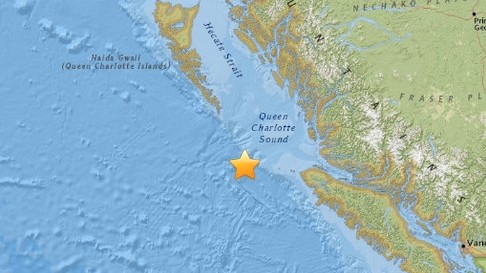
Although
spawning salmon are still returning to British Columbia’s rivers –
including some, surprisingly, to urban streams – early returns indicate
another troubling year, despite some bright spots.
“It
really is a mixed bag this year,” said Brian Riddell, president and CEO
of the Pacific Salmon Foundation. “How the heck can we sum it up? I’d
say it’s the good, the bad and the mysterious.”
There
were good sockeye salmon returns to the Great Central Lake system on
Vancouver Island and to the Nass River on the North Coast, he said.
But
contrasting that were very poor returns on the Fraser River, where only
about two million sockeye returned, far short of the more than six
million predicted in preseason forecasts. Even more dramatic was the
collapse of the pink salmon on the Fraser, with only about five million
fish showing up when more than 14 million had been forecast.
The
federal Department of Fisheries and Oceans declined to provide a
spokesperson to talk about the salmon runs, saying it is too early to
have firm numbers.
But Dr. Riddell said
it is possible at this point to paint a broad picture, and the
indication is that some stocks are in serious trouble.
.............................................................................................
The Vancouver Sun

file art ... use copy from text .... A spawning sockeye salmon is seen making its way up the Adams River in Roderick Haig-Brown Provincial Park near Chase, B.C. Tuesday, Oct. 4, 2011. Predictions for this year's salmon fishery on British Columbia's Fraser River are so massive there's no historical data to use to forecast the many millions of sockeye expected to return. THE CANADIAN PRESS/Jonathan Hayward ORG XMIT: CPT106
Photograph by: Jonathan Hayward , THE CANADIAN PRESS
The
late South Thompson sockeye run has seen far fewer fish than expected,
but the federal fisheries department says it’s still very preliminary
with the final numbers not known until late December or January.
“In terms of the sockeye return, it’s much more disappointing than people were hoping to see this year,” said Greg Taylor, senior fisheries adviser for the Watershed Watch Salmon Society, a Vancouver-based non-profit organization that monitors wild salmon.
“They arrive in the spawning grounds in October, and the numbers they’re seeing are disturbingly low.”
Taylor noted that the Pacific Salmon Commission’s (PSC) pre-run estimate of 1.24 million late-run salmon was dropped to 200,000 for the entire Fraser River run, which includes the South Thompson, the Little Shuswap, Shuswap Lake and Adams River.
“It’s a very dramatic reduction.”
Although federal Department of Fisheries and Oceans (DFO) officials cannot be interviewed about the preliminary numbers or the reasons for the smaller runs, a DFO update on Oct. 29 indicated that estimates of sockeye in the South Thompson were lower than expected.
“In terms of the sockeye return, it’s much more disappointing than people were hoping to see this year,” said Greg Taylor, senior fisheries adviser for the Watershed Watch Salmon Society, a Vancouver-based non-profit organization that monitors wild salmon.
“They arrive in the spawning grounds in October, and the numbers they’re seeing are disturbingly low.”
Taylor noted that the Pacific Salmon Commission’s (PSC) pre-run estimate of 1.24 million late-run salmon was dropped to 200,000 for the entire Fraser River run, which includes the South Thompson, the Little Shuswap, Shuswap Lake and Adams River.
“It’s a very dramatic reduction.”
Although federal Department of Fisheries and Oceans (DFO) officials cannot be interviewed about the preliminary numbers or the reasons for the smaller runs, a DFO update on Oct. 29 indicated that estimates of sockeye in the South Thompson were lower than expected.
Read More Here
................................................................................................
Meager salmon catch one of worst seasons for Sonoma County fishermen
Arianna Skikos, left, Lorrie Petersen and Jack Chauvin cut and package locally caught salmon for their customers at Andy's Produce Market, in Sebastopol, on Monday, Sept. 21, 2015. (Christopher Chung / The Press Democrat)
Commercial
salmon fishing got off to a slow start in May due to windy weather and
has stayed in a slump that local fishermen are blaming on unusually warm
ocean water in one of the worst king salmon seasons in memory.
Some
Bodega Bay-based anglers gave up rather than scramble for meager
catches of underweight and undersized salmon, despite the relatively
high dockside prices of $5 to $8 a pound.
Seafood
distributors, meanwhile, are bringing in fresh, wild salmon from Fort
Bragg and the Klamath River region in California to as far north as
Alaska and Canada. “There’s always some fish around,” said Michael Lucas
of North Coast Fisheries, a Santa Rosa wholesaler.
On Monday, local stores had salmon on ice for $16 to $20 a pound.
But
for local fishermen, the season is a bust, with the catch through
August at 30 percent of last year’s harvest and equally shy of the
forecast for the current season.






